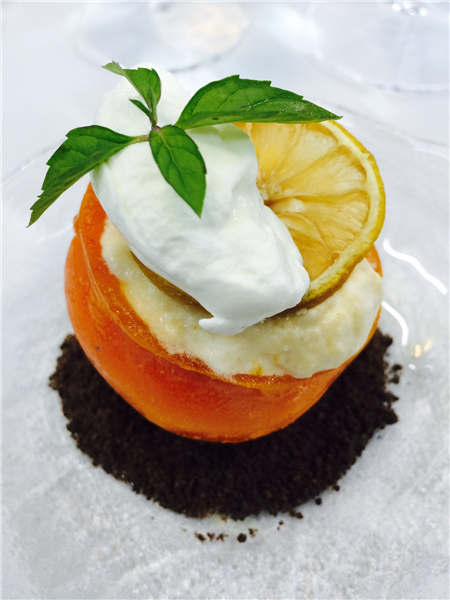Orange power
 |
|
Brickyard restaurant's persimmon dessert |
One of my fellow food writers at China Daily is a fan of both types.
"One is the larger and harder type that we call the Beijing penshi or 'basin persimmons',(probably because of its shape). The other type, more fibrous and sweeter, is believed to have originated from southern China," says Xu Junqian, a Shanghai resident.
The latter type (a squishy one) is so juicy when ripe that it's trickier to eat. Slice one horizontally in half-carefully, turn the top half over, and the fruit becomes two "bowls" of sweet delight begging to be spooned up.
Cooking the fruits can be challenging for similar reasons, and most chefs opt to transform the persimmon into dessert.
"Persimmon is a very common fruit here," says Randhir Singh, the chef at the Brickyard resort near the Great Wall at Mutianyu in Beijing." Villagers usually eat them fresh or frozen; they also dry them under the sun and eat them as a dessert, it tastes exactly like a hard, sweet jelly.
From the restaurant kitchen, Singh's team serves up frozen persimmon wedges as a dessert, or mixes the pulp into a sorbet laced with nutmeg, orange and mint.
"We also turn it into a semi-freddo recipe for our special dinners," he says. At Thanks-giving, persimmons find their way into hot puddings or savory cakes. This year, Singh may try it in a pasta or swirl dried ones in vanilla ice cream.
Dried persimmons are familiar snacks in Chinese markets, especially in western cities with a legacy of the old Silk Road.
















